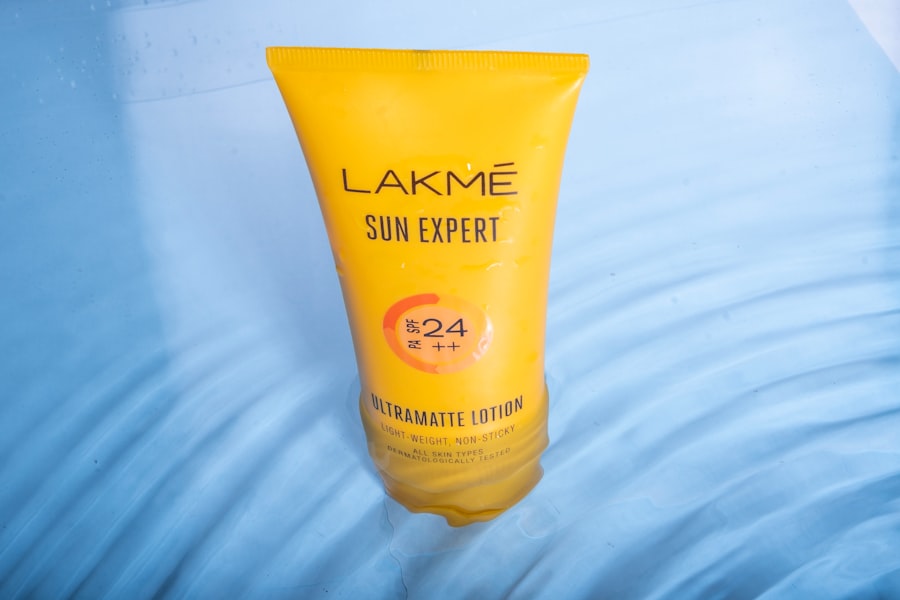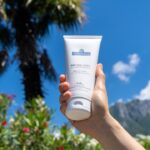When you step outside on a sunny day, the warmth of the sun can feel invigorating, but it’s essential to recognize the potential risks that come with sun exposure. Ultraviolet (UV) rays from the sun can cause significant damage to your skin, leading to both immediate and long-term health issues. The most immediate concern is sunburn, which can cause painful redness and peeling.
However, the long-term effects are far more serious, including premature aging, wrinkles, and an increased risk of skin cancer. Understanding these risks is crucial for protecting your skin and overall health. Moreover, it’s important to note that UV rays can penetrate clouds and even reach you on overcast days.
This means that you might not realize you’re being exposed to harmful rays when the sun isn’t shining brightly. The cumulative effect of sun exposure over the years can lead to more severe consequences, such as melanoma, the deadliest form of skin cancer. By educating yourself about these risks, you empower yourself to take proactive measures to safeguard your skin and maintain your health.
Key Takeaways
- Sun exposure can lead to skin damage, premature aging, and skin cancer.
- Choose a broad-spectrum sunscreen with SPF 30 or higher for effective protection.
- Apply sunscreen 15 minutes before going outside and reapply every 2 hours or after swimming or sweating.
- Wear protective clothing, such as hats, sunglasses, and long-sleeved shirts, to shield your skin from the sun.
- Seek shade and plan outdoor activities before 10am or after 4pm to minimize sun exposure.
Choosing the Right Sunscreen
Selecting the right sunscreen is a vital step in your sun protection strategy. With so many options available on the market, it can be overwhelming to determine which product is best suited for your needs. When choosing a sunscreen, look for one that offers broad-spectrum protection, which means it shields you from both UVA and UVB rays.
Additionally, consider a sunscreen with an SPF of at least 30, as this provides a sufficient level of protection for most skin types. Another factor to consider is whether you prefer a chemical or physical sunscreen. Chemical sunscreens absorb UV rays and convert them into heat, while physical sunscreens contain active mineral ingredients like zinc oxide or titanium dioxide that sit on top of the skin and reflect UV rays.
Each type has its benefits; for instance, physical sunscreens are often recommended for sensitive skin, while chemical sunscreens may be more lightweight and easier to apply. Ultimately, the best sunscreen is one that you will use consistently, so choose a formulation that feels comfortable on your skin.
Tips for Applying Sunscreen Effectively
Applying sunscreen correctly is just as important as choosing the right product. To ensure maximum protection, you should apply sunscreen generously and evenly to all exposed skin at least 15 minutes before heading outdoors. Don’t forget commonly overlooked areas such as your ears, the back of your neck, and the tops of your feet.
A good rule of thumb is to use about an ounce—roughly the size of a shot glass—for full-body coverage. Reapplication is another critical aspect of effective sunscreen use. You should reapply every two hours, or more frequently if you’re swimming or sweating.
Even water-resistant sunscreens can wear off after prolonged exposure to water or perspiration. To make reapplication easier, consider carrying a travel-sized sunscreen in your bag or using a spray or stick formulation that allows for quick touch-ups throughout the day. By following these tips, you can significantly enhance your sun protection efforts.
The Importance of Protective Clothing
| Types of Protective Clothing | Importance |
|---|---|
| Gloves | Protects hands from chemicals, cuts, and burns |
| Goggles | Prevents eye injuries from chemicals, dust, and debris |
| Aprons | Shields the body from chemical splashes and spills |
| Hard Hats | Reduces head injuries from falling objects and electrical hazards |
While sunscreen is an essential component of sun safety, it should not be your only line of defense. Protective clothing plays a crucial role in shielding your skin from harmful UV rays. Long-sleeved shirts, wide-brimmed hats, and UV-blocking sunglasses can provide additional layers of protection that sunscreen alone cannot offer.
When selecting clothing for sun exposure, look for garments made from tightly woven fabrics that offer UPF (Ultraviolet Protection Factor) ratings. In addition to UPF-rated clothing, consider wearing darker colors, as they tend to absorb more UV radiation than lighter shades. Loose-fitting clothing can also help keep you cooler while providing coverage from the sun.
By incorporating protective clothing into your outdoor wardrobe, you create a comprehensive approach to sun safety that reduces your risk of skin damage.
Seeking Shade and Timing Outdoor Activities
Another effective strategy for minimizing sun exposure is to seek shade whenever possible. Whether you’re at the beach, park, or backyard, finding a shaded area can significantly reduce your risk of UV exposure. Trees, umbrellas, and canopies are excellent options for creating a cool refuge from the sun’s rays.
If shade isn’t readily available, consider bringing your own portable shade solution for outdoor activities. Timing is also crucial when planning outdoor activities. The sun’s rays are typically strongest between 10 a.m.
and 4 p.m., so try to limit your time in direct sunlight during these hours.
By being mindful of when and where you spend time outdoors, you can enjoy your favorite activities while minimizing your risk of sun-related health issues.
The Dangers of Tanning Beds

In recent years, tanning beds have gained notoriety for their association with an increased risk of skin cancer. Many people mistakenly believe that tanning beds are a safer alternative to natural sunlight; however, they emit concentrated UV radiation that can be even more harmful than the sun’s rays. Using tanning beds can lead to skin damage and accelerate the aging process while significantly increasing your risk of developing melanoma and other skin cancers.
If you’re looking for a sun-kissed glow without the risks associated with tanning beds or excessive sun exposure, consider safer alternatives such as self-tanning lotions or sprays. These products provide a bronzed appearance without exposing your skin to harmful UV radiation. By avoiding tanning beds altogether and opting for safer alternatives, you can protect your skin while still achieving the look you desire.
Checking Your Skin for Signs of Skin Cancer
Regularly checking your skin for signs of skin cancer is an essential part of maintaining your health and well-being. Familiarize yourself with your skin by performing self-examinations at least once a month. Look for any new moles or changes in existing moles, such as changes in size, shape, color, or texture.
The ABCDE rule can help you remember what to look for: Asymmetry, Border irregularity, Color variation, Diameter larger than 6mm, and Evolving changes. If you notice any concerning changes or have any doubts about a mole or spot on your skin, don’t hesitate to consult a dermatologist. Early detection is key when it comes to treating skin cancer effectively.
Regular check-ups with a healthcare professional can also help catch any potential issues before they become serious problems.
Creating a Sun-Safe Routine for Everyday Life
Incorporating sun safety into your daily routine doesn’t have to be complicated; it simply requires a bit of planning and awareness. Start by making sunscreen application a part of your morning routine—apply it before heading out the door each day, even if it’s cloudy outside. Keep sunscreen in easily accessible places like your car or bag so that you’re reminded to reapply throughout the day.
Additionally, consider scheduling outdoor activities during times when the sun’s rays are less intense—early mornings or late afternoons are often ideal times for outdoor exercise or leisure activities. By making small adjustments to your daily habits and being proactive about sun safety, you can significantly reduce your risk of skin damage while enjoying all that the great outdoors has to offer. By understanding the risks associated with sun exposure and taking proactive steps to protect yourself, you can enjoy sunny days with confidence and peace of mind.
Remember that sun safety is not just a seasonal concern; it’s an essential aspect of maintaining healthy skin year-round.
Protecting your skin from the sun is crucial for maintaining its health and preventing damage. One way to do this is by using sunscreen regularly. According to a recent article on inlaserhairremoval.com, sunscreen helps to block harmful UV rays that can cause sunburn, premature aging, and even skin cancer. It is important to choose a broad-spectrum sunscreen with an SPF of at least 30 and to reapply it every two hours when spending time outdoors. Additionally, wearing protective clothing, seeking shade, and avoiding peak sun hours can also help to protect your skin from the sun’s harmful effects.
FAQs
What are the harmful effects of sun exposure on the skin?
Excessive sun exposure can lead to sunburn, premature aging, wrinkles, and an increased risk of skin cancer.
How can I protect my skin from the sun?
You can protect your skin from the sun by wearing sunscreen with a high SPF, seeking shade during peak sun hours, wearing protective clothing, and using sunglasses and hats.
What is the best type of sunscreen to use?
The best type of sunscreen to use is broad-spectrum sunscreen with an SPF of 30 or higher. It should be water-resistant and should be reapplied every 2 hours or after swimming or sweating.
What are some tips for staying safe in the sun?
Some tips for staying safe in the sun include avoiding tanning beds, checking your skin regularly for any changes, and seeking shade during peak sun hours.
How often should I apply sunscreen?
Sunscreen should be applied at least 15 minutes before going outside and should be reapplied every 2 hours, or immediately after swimming or sweating.






